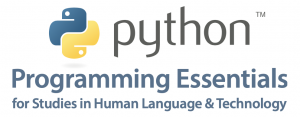2021 Demos & Discussion series:
December 1, 2021
12:30p – 1:15p
Simulive presentation in Zoom followed by live Q&A
Documents:
The One Button Studio (OBS): A Professional Option for Recording Presentations
Presenter: Stephen Tschudi
Calling CALL faculty! As the pandemic drags on, you have become proficient in managing live classes in Zoom. Now it is time for you to take your next step into blended learning: recording presentations for students to watch outside of class time, so you have more class time for rich interaction. The CLT’s One Button Studio, located in Moore Hall, is open and waiting for you to schedule a session! The OBS makes it easy to create a professional-quality video featuring you and your media, including virtual backgrounds and presentation slides. Indulge your inner weather reporter as you stand and deliver! The session will begin with a short video introducing the OBS and how it works, followed by live Q&A.
November 16, 2021
12:00p – 1:00p
Online
Documents:
Virtual Reality: Current Trends in Pedagogical Uses for World Languages
Presenters: Naiyi Xie Fincham & Richard Medina
With the rapid advancement and improved affordability of virtual reality (VR) technologies, there has been a significant growth in research and practices of using VR applications for educational purposes. In this Demos & Discussions talk, Naiyi will start with an overview of current trends in VR applications for language learning and teaching, highlighting how some key affordances of VR can be built into the design of learning activities and learner experiences. Then the research group led by Dr. Dongping Zheng will showcase an ongoing immersive VR project – Bizhuwanshang, designed for learners of both Chinese and English.
The Immersive Decision Maker: Richard Medina then discusses an environment for building virtual reality experiences that are based on branching scenarios – a learner-content type of interaction that positions learners as decision makers over a sequence of options. A step-by-step walkthrough of the virtual reality environment and its components will be provided using an example developed by Carla Consolini as part of her Summer internship. Richard will explain the recipe for creating your own immersive branching scenarios including hints for successful implementation and suggestions for first timers.
In this session, registered attendees will also have the opportunity to use Google Cardboard to experience the immersive VR scenario created by Carla Consolini. Details regarding how to check out the Google Cardboard will be provided with confirmation of registration.
Video recording of presentation
August 17, 2021
12:00p – 12:30p
Online
Documents:
Designing VR Scenarios for Language Learning
Presenter: Carla Consolini
Virtual reality offers promising affordances for language learning in the classroom. With virtual reality we can design and create meaningful immersive environments that focus on unique characteristics of the target language practice and culture. VR has the potential to facilitate higher performance in terms of memory and, in turn, language learning.
In this online presentation, Carla Consolini will introduce a virtual reality prototype that immerses language learners in a given situation in their target language. Users of this virtual reality prototype can observe and passively interact with their environment to better understand the target language culture. The presentation will give a short demonstration of the final product, and will provide a summary of the necessary steps for language teachers to replicate this prototype using their own content.
Video recording of presentation
The project described above was sponsored by the Center for Language & Technology and the Language Flagship Technology Innovation Center
July 21, 2021
12:00p – 12:30p
Online
Documents:
VOT-CP: A Python program for automatic data codification and calculation of voice onset time

Presenter: Ernesto Gutiérrez Topete
Voice onset time (VOT) is an acoustic property of speech that is able to reveal a lot of information about a speaker’s linguistic experience(s). Analyzing VOT helps us in (a) developing linguistic theories of language representation and (b) assessing a language learner’s approximation to phonetic norms in the target language.
In this online presentation, Ernesto Gutiérrez Topete will present a computational tool (a Python program) that can be used to analyze a speaker’s VOT productions for the purposes of linguistic research or instructional student support. This presentation will cover installation and usage instructions and will provide a live demonstration of how to use the tool. There will be time for Q&A at the end of the presentation.
Video recording of presentation
The presentation is part of the Programming Essentials for Studies in Human Language & Technology series at the Center for Language & Technology.
The work described above was supported through a Summer internship sponsored by the Center for Language & Technology and the Language Flagship Technology Innovation Center at the University of Hawai’i at Mānoa.
April 1, 2021
12p – 1p
Online
Documents:
Automatic Text Summarization: Building Authentic Language Learning Materials with Python and NLP

Presenter: Richard Medina
Summarization refers to a Natural Language Processing (NLP) technique for automatically generating shorter length texts from longer documents. Once compiled, these summaries can be used as material in varying language learning pedagogies and in varying learning tasks. In this demonstration and discussion we will introduce the major components of automatic text summarization and its utility for building language material from authentic sources (E.g., newspaper articles, literature). In addition to providing this background, we will also demonstrate application of this technique using Python and related NLP libraries. This talk is geared towards a non-technical but extremely curious audience.
Part of the Programming Essentials for Studies in Human Language & Technology series.
Questions? Please contact cltmanoa@hawaii.edu



